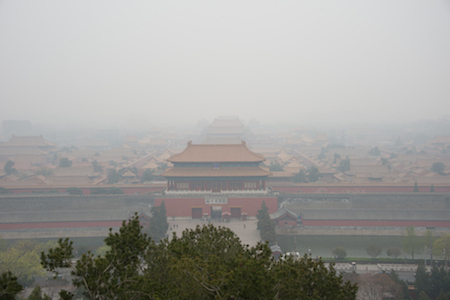By CC Huang, Energy Innovation, LLC

The Chinese leadership recognizes that a strong economy requires clean air: The costs of inaction are far too high. Today, more than 1.2 million Chinese die prematurely each year due to air pollution. In Northern China, according to a study by University of Chicago Professor Michael Greenstone, coal burning for heating purposes alone (not taking into account additional coal use for electricity production) takes an average 5.5 years off a person’s life.
China’s leaders are starting to take action. In just one year, 74 Chinese cities have installed approximately 500 air monitors and have begun publicly releasing real-time air quality data. The State Council has also issued an ambitious Action Plan on Air Quality (2013-2017), which defines ten measures it will take to reduce air pollution.
To help accelerate this political commitment and find the best solutions, the Paulson Institute and China Center for International Economic Exchanges co-organized Restoring Blue Skies: Accelerating Air Pollution Control, a two-day workshop on designing policies to improve China’s air quality, part of a multi-year effort to develop a long term plan to help alleviate air pollution in the Beijing, Tianjin and Hebei region. Other co-organizers include the Energy Foundation, Energy Innovation LLC, the Children’s Investment Fund Foundation, and the Clean Air Alliance of China.
The experts’ recommendations:
Enforcement and Compliance: China’s current level of enforcement and compliance with existing air quality policies is too low. Local Environmental Protection Bureaus need increased resources and authority to monitor and ensure compliance from all emitters. Fine levels must be increased so that polluting is no longer a cost-effective strategy for a firm.
Co-control Strategies: Co-control strategies are needed to ensure that both air quality and climate change issues are tackled simultaneously. End-use energy efficiency, economic and industrial structure re-adjustment, and a coal cap are all ways to manage both conventional pollutants and carbon dioxides.
Regional Cooperation: Regional coordination is necessary because of the number of complex air basins in China. In order for policies to be effective, regions must share data with one another and ensure consistency in their air quality modeling activities. Moreover, each region needs a clear leading authority that is backed by the central government to increase the credibility of enforcement officials and their actions.
Emissions Identification and Permitting: China must implement an overarching emissions identification and permitting system that is backed with science, authority and strict enforcement. Best Available Technologies must be used for new sources and also implemented when old sources are modified or upgraded.
These steps are not easy, but they are the key to reducing air pollution and climate change at the same time. The next few years can set the pattern for success.


